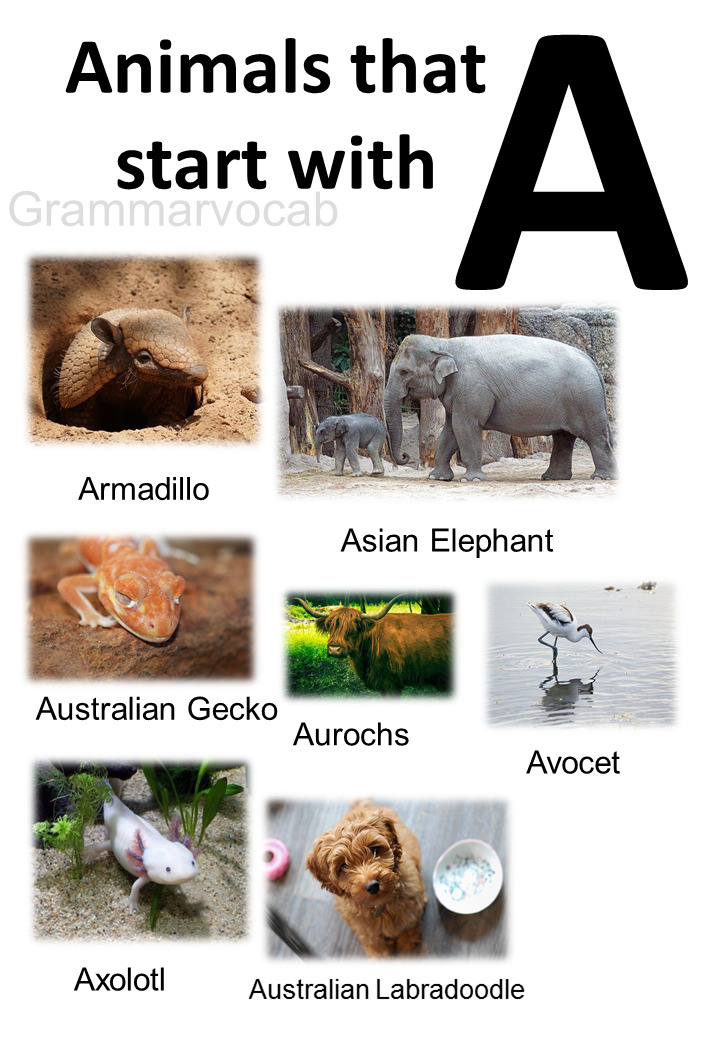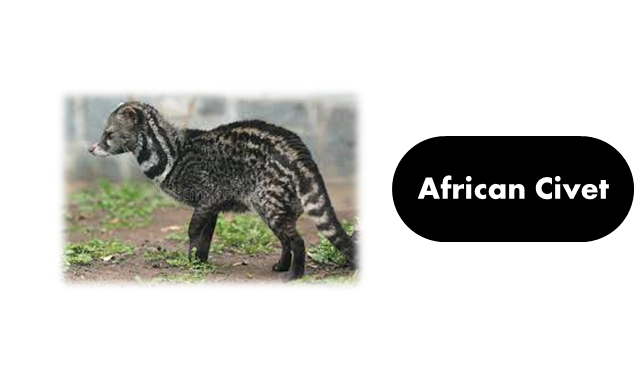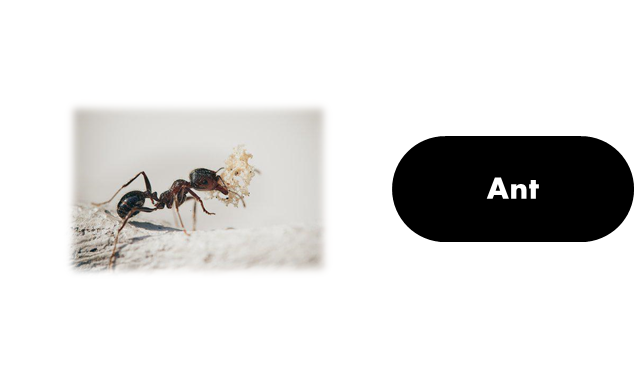When it comes to the animal kingdom, there are countless species with fascinating characteristics and unique traits. One way to explore the diversity of animals is to go through the alphabet and discover creatures that start with each letter. Today, we’ll be taking a closer look at animals that start with A. From agile predators to adorable herbivores, there’s no shortage of animals to discover in this category. So let’s get started and explore the fascinating world of animals that begin with the letter “A.”
All Animals That Begin With A
- African Civet
- Aussiedoodle
- Alaskan Klee Kai
- Amur Leopard
- Adelie Penguin
- Asian Giant Hornet
- African Clawed Frog
- Aussiedor
- Amazon Parrot
- American Water Spaniel
- Arapaima
- Alpine Dachsbracke
- Aidi
- Australian Labradoodle
- Accentor
- Asian Elephant
- African Penguin
- Australian Gecko
- Alpine Chough
- Alpaca
- Angelfish
- Angelfish
- Angora Goat
- Alusky
- Alaskan Husky
- Aardwolf
- Armyworm
- American Cocker Spaniel
- Appenzeller Dog
- American Cocker Spaniel
Animals Name That Start With A
- American Pygmy Goat
- Alabai
- Antelope
- Arctic Wolf
- Arizona Bark Scorpion
- American Bulldog
- American Hairless Terrier
- Alpaca
- Alligator
- American Coonhound
- Antarctic Scale Worm
- American Foxhound
- American Eskimo Dog
- Airedoodle
- Australian Terrier
- American Staffordshire Terrier
- Ainu
- Australian Mist
- American Cockroach
- Ambrosia Beetle
- African Wild Dog
- Australian Kelpie Dog
- Anteater
- Afghan Hound
- Asian Palm Civet
- African Tree Toad
- Australian Kelpie Dog
- African Forest Elephant
- Australian Bulldog
- American Toad
- African Buffalo
- Asiatic Black Bear
- African Bullfrog
- Asiatic Black Bear
- Anchovies
- Anatolian Shepherd Dog
- Arctic Hare
- Alpine Dachsbracke
- Akita
- Axolotl
- Alaskan Malamute
- Akita
- Axolotl
- Akita Shepherd
- Aye Aye
- Airedale Terrier
Must Learn: All Animals That Start With Letter B
Animals That Start With The Letter “A”
- Australian Shepherd
- American Bulldog
- African Bush Elephant
- Aurochs
- Apple Head Chihuahua
- Alaskan Malamute
- Alaskan Shepherd
- Alpine Goat
- Akbash
- Avocet
- Airedale Terrier
- Andean Mountain Cat
- Australian Retriever
- Albacore Tuna
- Albatross
- Aldabra Giant Tortoise
- Aldabra Giant Tortoise
- Armadillo
- American Alsatian
- Alligator Gar
- Alpine Salamander
- Addax
- Asian Elephant
- African Palm Civet
- Australian Cattle Dog
- American Leopard Hound
- Arctic Fox
- Abyssinian
- Asian Black Bear
- African Grey Parrot
- Australian Cattle Dog
- Appenzeller Dog
- American Coonhound
- Anteater
- American Robin
- Ainu Dog
- Australian Mist
- Affenpinscher
- Asian Giant Hornet
- Amazon River Dolphin
- American Eskimo Dog
- Aardvark
- Akbash
- Ant
- Armadillo
- Avocet
Download All Animals That Begin With The Letter A PDF

Animals That Start With A Facts
African civet
The African civet (Civettictis civetta) is a nocturnal mammal found throughout sub-Saharan Africa. Here are some factors related to African civets:
- Physical characteristics: African civets are medium-sized carnivores, with a body length of about 60 to 90 cm and a weight of 7 to 20 kg. They have a long, pointed face with small ears and a bushy tail. Their fur is coarse and grayish-yellow, with black spots and stripes.
- Habitat and distribution: African civets are found in a variety of habitats, including forests, grasslands, and savannas. They are widely distributed throughout sub-Saharan Africa, from Senegal in the west to Somalia in the east, and as far south as South Africa.
- Diet: African civets are omnivorous, feeding on a variety of foods such as insects, small mammals, birds, fruits, and carrion. They have a strong sense of smell that helps them locate food.
- Behavior: African civets are primarily nocturnal, sleeping during the day in dens or hollow trees. They are solitary animals, except during mating season, and communicate using a range of vocalizations, including hisses, growls, and screams.
- Conservation status: African civets are listed as a species of Least Concern by the International Union for Conservation of Nature (IUCN), meaning they are not considered to be threatened with extinction. However, they face threats from habitat loss, hunting for their meat and fur, and capture for the wildlife trade.
- Uses: African civets have been hunted for their musk, a strong-smelling secretion produced by glands near their anus. This musk has been used in perfumes, soaps, and other products, although most commercial musk now comes from synthetic sources.

Akita
Akita is a large dog breed that originated in the Akita Prefecture of Japan. Here are some factors related to Akitas:
- Physical characteristics: Akitas are large and powerful dogs with a muscular build. They have a thick double coat that can be a variety of colors, including white, brindle, red, and sesame. They have a broad head with small, triangular ears and a curled tail.
- Temperament: Akitas are known for their loyalty and courage. They can be stubborn and independent, but with proper training and socialization, they can be well-behaved and affectionate. Akitas are protective of their families and can be wary of strangers.
- Health: Akitas are generally healthy dogs, but they can be prone to certain health issues, including hip dysplasia, thyroid problems, and eye disorders. They also have a tendency to gain weight, so it’s important to monitor their diet and exercise.
- History: Akitas were originally used as hunting dogs in Japan, where they were trained to hunt wild boar, deer, and bear. They were also used for fighting in the past, but this practice has been banned in Japan since the mid-20th century.
- Training: Akitas are intelligent dogs, but they can be stubborn and challenging to train. It’s important to start training and socialization at a young age to establish good behavior and prevent aggressive tendencies.
- Popularity: Akitas are a popular breed worldwide, with a loyal following of owners who appreciate their beauty and loyalty. However, they are not recommended for first-time dog owners or households with small children.

Alligator
Alligators are large, carnivorous reptiles that are native to the southeastern United States and China. Here are some factors related to alligators:
- Physical characteristics: Alligators have a large, heavy body with a broad head and a long, powerful tail. They have strong, sharp teeth and rough, scaly skin that is armored with bony plates called osteoderms. They are typically dark green or brown in color.
- Habitat and distribution: Alligators are found in freshwater environments such as swamps, marshes, and rivers. They are native to the southeastern United States, including Florida, Louisiana, and Georgia, as well as parts of China.
- Diet: Alligators are carnivorous and feed on a variety of prey, including fish, birds, mammals, and other reptiles. They are opportunistic hunters and will eat almost anything they can catch.
- Behavior: Alligators are generally solitary animals, although they can sometimes be found in groups, called congregations, during the mating season or in areas with abundant food. They are cold-blooded and rely on external sources of heat to regulate their body temperature.
- Conservation status: American alligators are listed as a species of Least Concern by the International Union for Conservation of Nature (IUCN). However, they were once hunted for their skin and meat, and habitat loss and degradation continue to threaten their populations.
- Uses: Alligator skin is used to make a variety of leather products, including shoes, belts, and handbags. Alligator meat is also considered a delicacy in some parts of the world and is consumed by humans. In addition, alligators play an important ecological role in their habitats as top predators.

Anteater
Anteaters are mammals known for their long snouts and sticky tongues that are used to catch their prey. Here are some factors related to anteaters:
- Physical characteristics: Anteaters are medium to large-sized mammals with long snouts and tongues that can reach up to two feet in length. They have sharp claws for digging into termite mounds and ant hills, and their body is covered with shaggy fur.
- Habitat and distribution: Anteaters are found in Central and South America, living in a variety of habitats, including rainforests, savannas, and grasslands.
- Diet: Anteaters are insectivores and primarily eat ants, termites, and other small insects. They can consume up to 30,000 ants or termites in a day, using their long tongues to capture their prey.
- Behavior: Anteaters are generally solitary animals, and they are active during the day. They have poor eyesight but an excellent sense of smell, which they use to locate their prey.
- Conservation status: Some species of anteaters are listed as threatened or endangered, primarily due to habitat loss and fragmentation, hunting, and the use of pesticides in their habitats.
- Unique adaptations: Anteaters have several unique adaptations that make them well-suited for their insectivorous lifestyle. For example, their long snouts and tongues are specially adapted to capture ants and termites, and their fur is specialized to help protect them from insect bites and stings.

Addax
The addax, also known as the white antelope, is a critically endangered antelope species that is native to the Sahara desert in Africa. Here are some factors related to the addax:
- Physical characteristics: The addax has a distinctive pale, sandy color that blends in with its desert habitat. It has long, spiraled horns that can reach up to three feet in length, and a stocky build that helps it conserve water in the arid desert environment.
- Habitat and distribution: The addax is found in the Sahara desert in northern Africa, where it lives in arid and semiarid regions with sparse vegetation.
- Diet: The addax is a herbivore and primarily feeds on grasses and other vegetation. It has adapted to survive in the desert environment by being able to extract moisture from its food and by conserving water.
- Behavior: The addax is a social animal and lives in small herds of up to 20 individuals. It is most active during the cooler parts of the day and tends to rest in the shade during the hottest parts of the day.
- Conservation status: The addax is critically endangered, with only a few hundred individuals left in the wild. The main threats to the addax are hunting, habitat loss, and competition with livestock for resources.
- Conservation efforts: Various conservation efforts have been implemented to protect the remaining addax populations, including captive breeding programs, habitat restoration, and anti-poaching measures. However, the addax remains one of the most endangered large mammals in the world.

Accentor
Accentors are a family of small passerine birds that are found primarily in Eurasia. Here are some factors related to accentors:
- Physical characteristics: Accentors are small, sparrow-like birds that range in size from 12-18 cm. They have short, rounded wings and a compact body. Their plumage is generally dull brown or gray, with some species having streaks or spots on their breast and flanks.
- Habitat and distribution: Accentors are found primarily in Eurasia, from northern Europe and Asia to the Himalayas. They are generally found in mountainous habitats, such as rocky slopes, cliffs, and scree.
- Diet: Accentors are omnivorous and feed on a variety of insects, seeds, and fruit. They forage on the ground or in low vegetation, using their beaks to probe for food.
- Behavior: Accentors are typically monogamous and form pairs during the breeding season. They are territorial birds and defend their nesting site from other birds. They are known for their distinctive, melodious songs, which they use to attract mates and defend their territory.
- Conservation status: Most species of accentors are not considered to be threatened, although some populations may be affected by habitat loss and fragmentation. One species, the Siberian accentor, is considered to be near-threatened due to declines in its breeding range.
- Taxonomy: The accentors are a family of birds within the Passeriformes order, which also includes sparrows, finches, and many other small birds. There are about 40 species of accentors in the family Prunellidae.

Ant
Ants are social insects that are found worldwide, and they are known for their highly organized colonies and division of labor. Here are some factors related to ants:
- Physical characteristics: Ants have three body parts (head, thorax, and abdomen), six legs, and two antennae. They range in size from tiny to several centimeters long, and they come in a variety of colors.
- Habitat and distribution: Ants are found in almost all terrestrial environments worldwide, including forests, grasslands, deserts, and urban areas. They can build their nests in soil, leaf litter, wood, and even in the crevices of buildings.
- Diet: Ants are omnivorous and feed on a wide range of food sources, including other insects, honeydew produced by aphids, nectar, and seeds.
- Behavior: Ants are social insects and live in large colonies that are organized into castes, including queens, workers, and soldiers. Ants communicate with each other using chemical signals, touch, and sound, and they are known for their ability to work together to accomplish complex tasks.
- Ecological importance: Ants are important to ecosystems as they play a significant role in nutrient cycling and seed dispersal. They also act as predators and prey, helping to maintain the balance of the food web.
- Economic importance: Ants can have significant economic impacts, both positive and negative. They can be beneficial as predators of crop pests, but they can also be destructive to crops and buildings. Some ant species are also invasive and can cause harm to native ecosystems and economies.
- Evolution: Ants evolved from a group of wasp-like ancestors during the mid-Cretaceous period, around 130 million years ago. Over time, they have diversified into over 13,000 species, with a wide range of morphological and behavioral adaptations.

Antelope
Antelopes are a diverse group of mammals that belong to the Bovidae family, which also includes cattle, sheep, and goats. Here are some factors related to antelopes:
- Physical characteristics: Antelopes vary in size, from the tiny Royal antelope, which is only about 25 cm tall, to the large eland, which can weigh up to 1,000 kg. They have slender bodies, long legs, and are generally adapted for speed and agility. Many antelopes have horns, which are used for defense and territorial displays.
- Habitat and distribution: Antelopes are found throughout Africa, Asia, and parts of North America. They are typically found in open grasslands, savannas, and deserts, although some species inhabit forests and mountains.
- Diet: Antelopes are herbivores and feed on a variety of vegetation, including grasses, leaves, and shoots. Some species are browsers and feed on leaves and twigs from bushes and trees.
- Behavior: Antelopes are social animals and form herds or territorial groups. They communicate with each other using vocalizations and body language, and some species are known for their elaborate courtship displays.
- Conservation status: Many antelope species are threatened or endangered due to habitat loss, poaching, and competition with domestic livestock. The International Union for Conservation of Nature (IUCN) lists over 20 antelope species as vulnerable, endangered, or critically endangered.
- Economic importance: Antelopes are important for local economies through tourism and hunting. Their meat and hides are also used for food and clothing.
- Taxonomy: Antelopes belong to the Bovidae family, which includes other cloven-hoofed mammals such as cattle, sheep, and goats. There are over 90 species of antelopes, which are classified into several subfamilies based on their physical and genetic characteristics.

Aardvark
The aardvark, also known as the African ant bear, is a nocturnal mammal that is native to Africa. Here are some factors related to aardvarks:
- Physical characteristics: Aardvarks have a stocky, pig-like body, a long snout, and large ears. They have a long, sticky tongue that they use to capture ants and termites, their primary food source. They are covered in coarse, yellowish-brown fur, and their skin is thick and tough.
- Habitat and distribution: Aardvarks are found throughout sub-Saharan Africa, in savannas, grasslands, and woodlands. They live in burrows that they excavate themselves, often near termite mounds or ant colonies.
- Diet: Aardvarks are insectivores and feed almost exclusively on ants and termites. They can consume up to 50,000 insects in a single night, using their long, sticky tongue to capture them from underground tunnels.
- Behavior: Aardvarks are nocturnal and spend most of their day sleeping in their burrows. They are solitary animals and only come together to mate. When threatened, they can run quickly, dig rapidly, or curl up into a tight ball for protection.
- Conservation status: Aardvarks are listed as a species of “Least Concern” by the International Union for Conservation of Nature (IUCN), meaning that they are not currently at risk of extinction. However, they are threatened by habitat loss and hunting for their meat and skin.
- Cultural significance: Aardvarks are important in African folklore and are featured in many myths and legends. They have also been portrayed in art and literature, such as in the book “Ant and the Aardvark” and the animated series “The Ant and the Aardvark.”
- Taxonomy: Aardvarks are the only living species in the family Orycteropodidae, and their closest living relatives are elephants and hyraxes. They are also unique among mammals in that their teeth are continuously growing and do not have enamel.






